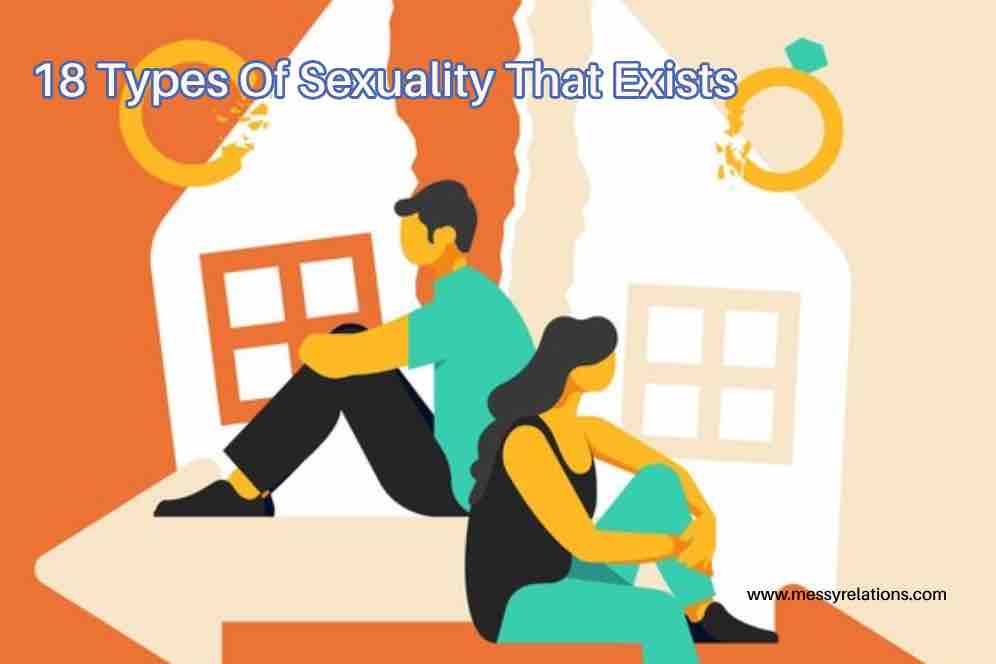Asexuality is a spectrum of sexual orientations characterized by a lack of sexual attraction to others. People who identify as asexual may experience little or no sexual desire, or they may find sexual activity to be neutral or even unpleasant.
There are many different types of asexual, and each person’s experience is unique. Some common types of asexual include:
1. Asexual
Asexual people are those who do not experience sexual attraction to others. This does not mean that they are not interested in relationships or intimacy, but rather that they do not experience the same kind of physical or emotional pull towards others that allosexual (non-asexual) people do.There are many different ways to be asexual, and there is no one right way to experience asexuality. Some asexual people may still enjoy engaging in sexual activity, while others may not. Some asexual people may be romantically attracted to others, while others may not.It is important to remember that asexuality is a valid and legitimate sexual orientation. Asexual people are just as deserving of respect and understanding as anyone else.
Here are some additional facts about asexual people:
- The asexual community is estimated to be between 1% and 7% of the population.
- There are many different terms that asexual people use to describe their experiences, such as ace, aroace, graysexual, and demisexual.
- Asexuality is not a medical condition, and there is no need for asexual people to seek treatment.
2. Graysexual
People who identify as graysexual fall somewhere on the spectrum between asexual and sexual and are among different types of asexual people. They may experience sexual attraction rarely or only under certain circumstances.
Graysexual is among different types of asexual orientation on the asexual spectrum that refers to people who experience sexual attraction only rarely, at a low level of intensity, or only in very specific situations. Graysexual people may identify as asexual, or they may identify as something else entirely. There is no one right way to be graysexual, and each person’s experience is different.
Some common characteristics of graysexual people include:
- They may experience sexual attraction only after forming a strong emotional connection with someone.
- They may only experience sexual attraction under certain circumstances, such as when they are feeling particularly close to someone or when they are in a specific mood.
- They may experience sexual attraction very rarely, or only once or twice in their lifetime.
It is important to remember that graysexuality is a valid and legitimate sexual orientation. Graysexual people are just as deserving of respect and understanding as anyone else.
3. Demisexual
People who identify as demisexual are among different types of asexual that only experience sexual attraction after forming a strong emotional connection with someone.
Sure, here is a 100-word definition of demisexual:
Demisexual is a sexual orientation on the asexual spectrum that refers to people who only experience sexual attraction after forming a strong emotional connection with someone. This means that they may not experience sexual attraction at all, or only very rarely, until they have developed a deep emotional bond with someone.
Demisexual people may identify as asexual, or they may identify as something else entirely. There is no one right way to be demisexual, and each person’s experience is different.
Some common characteristics of demisexual people include:
- They may only experience sexual attraction after forming a close emotional bond with someone.
- They may not experience sexual attraction at all until they have known someone for a long time.
- They may not be interested in casual sex or hookups.
- They may feel a strong emotional connection to people before they experience sexual attraction.
It is important to remember that demisexuality is a valid and legitimate sexual orientation. Demisexual people are just as deserving of respect and understanding as anyone else.
Here are some additional facts about demisexuality:
- The demisexual community is estimated to be between 1% and 5% of the population.
- The term “demisexual” was coined in 2006 by a woman named Asexuals United forum user snowflake_seraph.
- Demisexuality is not a medical condition, and there is no need for demisexual people to seek treatment.
- There are many resources available for demisexual people, including online forums, support groups, and educational materials.
If you are demisexual, or if you know someone who is, there are many resources available to help you learn more about demisexuality and to find support. You are not alone.
4. Aromantic
People who identify as aromantic do not experience romantic attraction to others.
Aromantic is among different types of asexual romantic orientation that refers to people who do not experience romantic attraction. This means that they do not feel the same kind of emotional pull towards others that alloromantic (non-aromantic) people do.
Aromantic people may still enjoy having close friendships, and they may even be interested in having a QPR (queer platonic relationship). However, they do not experience the same kind of romantic feelings that alloromantic people do.
It is important to remember that aromanticism is a valid and legitimate romantic orientation. Aromantic people are just as deserving of respect and understanding as anyone else.
Here are some additional facts about aromanticism:
- The aromantic community is estimated to be between 1% and 5% of the population.
- The term “aromantic” was coined in 2001 by a woman named David Jay.
- Aromanticism is not a medical condition, and there is no need for aromantic people to seek treatment.
- There are many resources available for aromantic people, including online forums, support groups, and educational materials.
5. Aplatonic
People who identify as aplatonic do not experience platonic attraction to others and is among different types of asexual orientations. Aplatonic is a romantic orientation on the aromantic spectrum that refers to people who experience little to no platonic attraction. This means that they rarely experience squishes, or desire to form a friendship with specific people.
Aplatonic people may still enjoy having close friendships, and they may even be interested in having a QPR (queer platonic relationship). However, they do not experience the same kind of platonic feelings that alloplatonic (non-aplatonic) people do.
It is important to remember that aplatonism is a valid and legitimate romantic orientation. Aplatonic people are just as deserving of respect and understanding as anyone else.
In addition to these common types of asexual, there are many other ways to identify on the asexual spectrum. Some people may identify as “aceflux,” which means that their level of sexual attraction fluctuates over time. Others may identify as “aegosexual,” which means that they enjoy sexual fantasies or erotica but do not want to have sex themselves.
There is no one right way to be asexual. Everyone’s experience is different, and it’s important to find an identity that feels comfortable and accurate for you.
Here are some of the different types of asexual that you may not know about:
6. Apothisexual
People who identify as apothisexual experience a strong aversion to sex and are among different types of asexual people. They may find the idea of sex to be repulsive or even frightening. Apothisexual is a microlabel on the asexual spectrum that refers to people who are sex-repulsed. This means that they are averse to the idea of sex in general, and they may even find it to be disgusting or repulsive.
Apothisexual people may still enjoy close relationships with others, but they do not want to engage in sexual activity. They may also feel indifferent or even negative towards sex, and they may not understand why other people enjoy it.
It is important to remember that apothisexual is a valid and legitimate sexual orientation. Apothisexual people are just as deserving of respect and understanding as anyone else.
7. Autochorissexual
People who identify as autochorissexual experience sexual arousal from fantasies or erotica, but they do not want to have sex themselves and are among different types of asexual orientation people.
8. Fraysexual
People who identify as fraysexual experience sexual attraction to someone, but that attraction fades over time as they get to know the person better. Fraysexuality is a sexual orientation on the asexual spectrum that describes people who experience sexual attraction to someone until they form an emotional bond with them. This means that fraysexual people may feel sexual attraction to strangers or people they don’t know very well, but this attraction may fade or disappear as they get to know the person better.
The term “fraysexual” comes from the word “fray,” which means “to become gradually worn away.” This reflects the way that fraysexual people’s sexual attraction to someone can gradually diminish as they get to know them better.
Fraysexuality is a relatively new term, and there is still some debate about how it should be defined. However, it is generally understood to be a form of asexuality, meaning that fraysexual people do not experience sexual attraction in the same way that allosexual (non-asexual) people do.
Fraysexual people may still experience romantic attraction, and they may be able to enjoy sex in certain contexts. However, the sexual attraction they feel may be fleeting or conditional, and it may depend on the level of emotional intimacy they have with the person.
9. Reciprosexual
People who identify as reciprosexual only experience sexual attraction to someone if they know that the other person is also attracted to them. Reciprosexuality is a sexual orientation on the asexual spectrum that describes people who only experience sexual attraction to someone if they know that the person is also sexually attracted to them. This means that reciprosexual people may not feel sexual attraction to someone at all, unless they are sure that the other person is also attracted to them.
The term “reciprosexual” comes from the words “reciprocal” and “sexual,” and it reflects the way that reciprosexual people’s sexual attraction is dependent on the other person’s attraction to them.
Reciprosexuality is a relatively new term, and there is still some debate about how it should be defined. However, it is generally understood to be a form of asexuality, meaning that reciprosexual people do not experience sexual attraction in the same way that allosexual (non-asexual) people do.
Reciprosexual people may still experience romantic attraction, and they may be able to enjoy sex in certain contexts. However, the sexual attraction they feel may be fleeting or conditional, and it may depend on the level of reciprocation from the other person.
10. Quoiromantic
People who identify as quoiromantic are unsure whether they experience romantic attraction. They may feel romantic attraction sometimes, but they may also feel like they don’t experience it at all.
These are just a few of the many different types of asexual that exist. If you’re not sure how to identify, there are many resources available to help you learn more about the asexual spectrum. You can also talk to other asexual people to get their insights and experiences.
The Importance of Asexual Visibility
It’s important to remember that asexual people are just as diverse as any other population group. We come from all walks of life, and we have a wide range of experiences. However, we are often overlooked or misunderstood.
That’s why it’s so important to raise awareness of asexual people and their experiences. We need to challenge the stereotypes about asexual people and show that we are just as valid and deserving of respect as anyone else.
One way to raise awareness of asexual people is to talk about it. Talk to your friends, family, and colleagues about what it means to be asexual. Share articles and resources about asexuality. The more people who know about asexuality, the less likely they are to make assumptions or stereotypes about asexual people.
You can also support asexual organizations and events. There are many organizations that are working to raise awareness of asexuality and to provide support to asexual people. By supporting these organizations, you can help to make a difference in the lives of asexual people.
Asexuality is a spectrum of sexual orientations, and there are many different types of asexual. It’s important to remember that asexual people are just as diverse as any other population group. We come from all walks of life, and we have a wide range of experiences.
That’s why it’s so important to raise awareness of different types of asexual people and their experiences. We need to challenge the stereotypes about asexual people and show that we are just as valid and deserving of respect as anyone else.
If you’re among different types of asexual, or if you know someone who is asexual, there are many resources available to help you. You can find information about asexuality online, or you can contact an asexual organization. There is also a growing community of asexual people online and in person.




